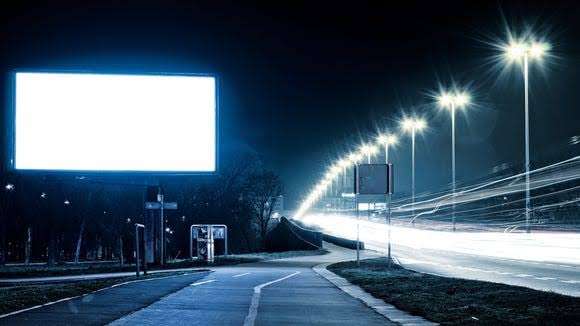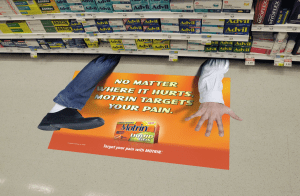Electronic Billboards: learn more about this tactics
COVID-19 will change the\ the billboard industry
As the effects of the economic impact of COVID-19 crisis continue to spread with the advertising industry, advertisers start feelings its destructive effects. Marketers are facing a challenge to adapt the advertising message and tactics. Traditional billboards will not be effective as the consumers will be more distanced and spend more time in their homes.
A survey conducted by the platform Numerator indicated many industries are shifting their advertising messaging. As example, restaurants are pivoting to food delivery message. The food industry has been quick to pivot their messaging to focus on in-home delivery options. The increased “work from home” periods will naturally lead to an increase in the time spent at home. Traditional OOH will be replaced by in-home advertising.
Adzze has been working with its clients to adapt to a more sensitive message. The team has been extending the capabilities to offer advertising options that can reach the consumers at their safest place: at home. One of these concepts uses pizza boxes as advertising space that gets delivered at the homes of the audience. Think of this as small moving billboard that your target audience will grab in their hands. Studies demonstrated that this type of ads can evoke an 80% recall rate (8 out of 10 households individuals remember to see an ad on the pizza box) with an average ROI of 150%. This means, for every 1 dollar the advertiser invested in a pizza box advertising campaign, they received at least additional 2.5 dollars of sales. For more details see the article Estimating the ROI of Pizza Box Marketing.
The obsession with digital things is seeping into every corner of traditional advertising. Notably, the number of traditional billboards on US highways is on a declining trend, according to Statista data. As such, advertising agencies are leaning on electronic billboards to stay relevant.
Are electronic billboards worth the money?
Market trends are often predictable. Usually, consumers gravitate towards products and services that are more convenient and affordable. On the other hand, suppliers concentrate more on products and services that offer sustainable and more significant profits. In the advertising industry, the digital trend is massive. Digital billboards are hard to ignore. The flashing images and the graphic nature of the images shown are very eye-catching.
Besides, electronic billboards offer flexibility that is inaccessible to traditional billboard advertisers. Particularly, advertisers can change the design of the message within a few hours, as opposed to the days it takes to change the ad on traditional billboards.
Electronic OOH Advertising
As digital billboards continue to take up more space at the side of highways, they are posing a risk to safety on the roads. Notably, distracted driving is a significant cause of accidents on American roads. Statistics show that distracted driving claims at least nine lives per day or close to 3,500 annually. Such accidents happen, especially when drivers take their eyes away from the road to read a billboard or do other things. Interestingly, visual distraction is worse when it comes to digital billboards since they are hard to ignore.
The role of the billboards in various accidents globally has set off a worldwide campaign against the media. In Sao Paulo, city authorities enacted the Clean City Law aimed at averting visual pollution from billboards and posters. Other cities with similar ambitions include Chennai in India, Tehran in Iran, and states like Hawaii and Vermont.
Cost of billboards is also an issue
Advertising on electronic billboards is expensive. On average, businesses pay between $2,000 and $7,000 per week to advertise on the billboards. However, the price may vary according to the location and the minutes the ad is displayed. Further, the average cost per thousand for the electronic billboards is about $37.42 compares to $2.05 for traditional billboards. Businesses have to pay too high a premium to advertise via the media, which might not be worth the money.
Unfortunately, that cost does not guarantee that the target audience will actually read the message. Mostly, electronic billboards appear in urban centers. Interestingly, the people in such locations are ever busy. The probability of them engaging with your ad is next to none. This, therefore, shows that the costs of the billboards are unjustifiable.
There is an unproven assumption that billboards are effective. In fact, several publications demonstrated the lack of targeting and tracking, low engagement with the target audience, high costs, low ROI and in many cases the issue of visual pollution and low brand recall. The targeting issues very often are addressed with alternative approaches as mobile billboards, digital OOH, ads on trucks and ads in places people don’t expect as flags, backpacks, inflatable objects, gas pump and balloons.
DOOH will be no longer effective
Billboards will not be an attractive advertising method. Blank billboards and cancelled digital ads across the country and many parts of the globe is a strong pointer to how the coronavirus pandemic sweeping the world today has impacted sign advertising. The devastating effects of the pandemic on human lives could almost be likened to how terribly it has also dealt with businesses around the world. Some out-of-home advertising firms have withdrawn their earnings projections for the year as a result of market uncertainties at the moment. A good number of businesses that will survive the pandemic will most likely have to struggle to find their footing again. Reports also say that digital ad giants, Facebook and Google have also had their shares of the downturn. Even Coca-Cola has soft-pedaled its marketing drives.
Most digital ads creation companies have put a temporary stop on ads creation. A reasonable overview of the current crisis wrought by the COVID-19 spread shows that making new ad videos may just end up as a waste of time and money for the ad shoot companies as well as it is for the owners of the business. In the coming weeks, ad buyers in the USA will tilt towards new advertising ideas the more. All methods of advertising that serve as workable alternatives to OOH advertising will shine as saviors. And they’ll shine the more if they provide equally satisfying results for the clients.
You should try door hanging flyers as an alternative
The point of advertising is to ensure that as many people as possible know your brand. However, it is not always about visibility but also engagement. Using door hanging flyers as an advertising avenue is one way to score visibility together with brand engagement. However, you have to ensure you do the delivery properly. If you are using a delivery team, ensure it undergoes proper training. Door hangers are innovative in that they catch the attention of the target audience instantly.






